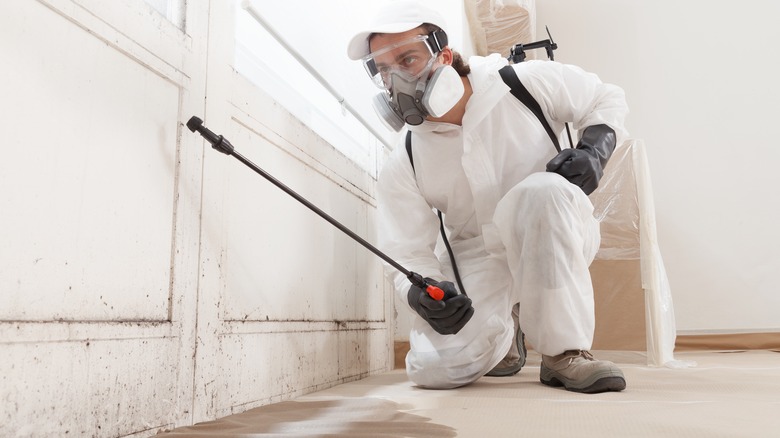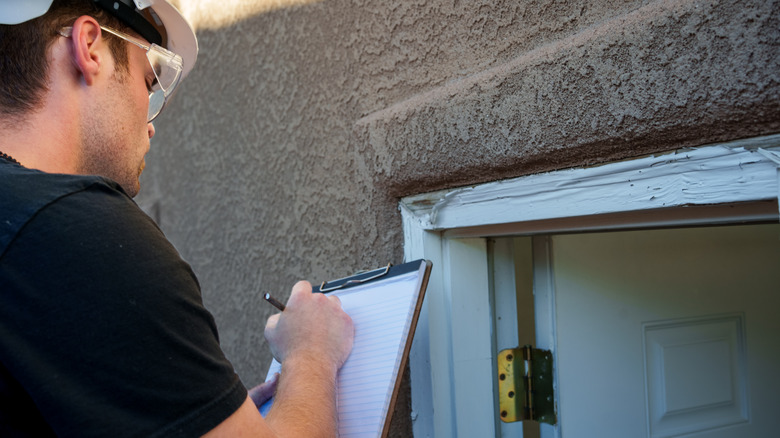Mold Remediation Vs Removal: The Important Difference You Should Know
So, you've found mold in your home. Take heart that you're not alone because it's estimated that mold can be found in nearly half of all U.S. homes, according to a 2022 study from the National Institute for Occupational Safety and Health (via Buildings (Basel)). Of course, you know you want to get rid of it, but when you first look for how to do it yourself or hire professional services, you may find a lot of varying language between mold removal and mold remediation. Though it might seem they're being used synonymously, they are vastly different offerings.
Essentially, mold removal is just one part of mold remediation. This includes removing mold and mold-infested materials from the home, either by chemical cleaning or physical extraction. For example, using a spatula to scrape away a section of moldy drywall is considered mold removal, which plays an important role in remediation.
There are a lot of DIY ways to remove mold from your home, but you may need help beyond that in a process known as "remediation." Remediation is a much more comprehensive, multi-step routine that not only eliminates current mold but seeks to eliminate the conditions that allowed it to grow in the first place, such as leaky pipes and high humidity in the home.
What mold remediation includes
One telltale sign that it's time to call a professional to get rid of your mold problem is if the mold has spread beyond 10 square feet, according to the Environmental Protection Agency. Professional remediation requires removing all mold-infested materials, which can include anything, including drywall, insulation, and carpeting. This means the process can take anywhere from one to several days, depending on the extent of the damage.
Mold removal is typically followed up by cleaning and sanitizing with a biocide in order to kill any invisible mold spores and prevent a resurgence. They'll isolate the room by sealing windows and doors in order to prevent the mold from spreading to other parts of your home and set up fans and dehumidifiers in order to remove any excess moisture that can also cause mold.
Not only will the specialist remove, clean, and disinfect the areas impacted by mold growth, but they will also perform an inspection of your home. This will allow them to understand the full extent of the mold's growth and identify high-moisture areas that can cause future mold growth, which can be something as simple as an improperly sealed windowsill or something more extensive like moisture in the walls. Additionally, mold remediation specialists will examine and possibly change out your air filters, as HEPA air filters can play a significant role in purifying the air. That's also why it's key to routinely clean or change your air filters.

